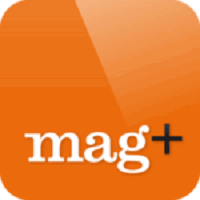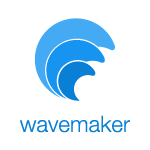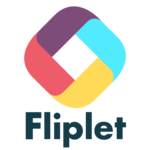Description

Mag+ Application Development

WaveMaker
Comprehensive Overview: Mag+ Application Development vs WaveMaker
Mag+ Application Development:
a) Primary Functions and Target Markets:
- Primary Functions: Mag+ is a digital publishing platform designed to create and distribute content-rich mobile applications. It enables the design of interactive and engaging multimedia content without extensive coding knowledge. Key features include drag-and-drop design tools, template-based layouts, and integration capabilities for embedding multimedia elements such as videos, audio, and slideshows.
- Target Markets: Mag+ primarily targets publishers, marketers, and content creators seeking to deliver magazine-style content on mobile devices. Its main audience includes media companies, corporate marketers, and digital agencies looking to enhance their digital presence.
b) Market Share and User Base:
- Mag+ serves a niche market of digital publication creators and enterprises focused on interactive content. While specific market share data might not be publicly available, it is primarily used by smaller to mid-sized companies and niche publications rather than large-scale enterprise customers. Its user base tends to consist of digital magazines, content-rich apps, and marketing teams within various industries.
c) Key Differentiating Factors:
- Ease of Use: Mag+ emphasizes simplicity and user-friendliness, allowing creators with limited coding skills to design interactive apps.
- Focus on Multimedia: A strong emphasis on multimedia integration makes it ideal for projects requiring high levels of interactivity and visual appeal.
- Specialization: It is highly specialized for magazine publishers and content creators looking for specific solutions for digital magazines and similar projects.
WaveMaker:
a) Primary Functions and Target Markets:
- Primary Functions: WaveMaker is a low-code development platform that accelerates the creation of enterprise-grade web and mobile applications. It offers a visual drag-and-drop interface, enabling rapid application development (RAD) with built-in features for modeling, deploying, and managing applications using cloud-native technologies.
- Target Markets: WaveMaker targets enterprises needing to develop custom business applications quickly without extensive IT involvement. It serves industries such as finance, healthcare, and retail, where tailored solutions and rapid development cycles are critical.
b) Market Share and User Base:
- WaveMaker is recognized in the low-code/no-code platform sector, which has been experiencing substantial growth due to the demand for quick and agile application development. Its user base includes enterprises, independent software vendors (ISVs), and developers who seek to streamline application development processes.
c) Key Differentiating Factors:
- Enterprise Focus: WaveMaker is tailored for enterprise-scale projects, emphasizing integration, scalability, and comprehensive data management features.
- Low-Code Advantage: It provides a robust low-code development environment suited for complex business applications, reducing the dependency on traditional coding methods.
- Customization and Flexibility: Offers higher customization possibilities compared to simpler app builders, making it suitable for more complex and enterprise-specific application needs.
Comparison Overview:
- Mag+ focuses on content-driven applications for publishers and marketers, prioritizing aesthetic design and user engagement, while WaveMaker provides a more versatile and robust platform suitable for enterprise-level applications requiring rapid development cycles.
- In terms of market share, WaveMaker competes in the broader and growing low-code development space, potentially giving it a larger and more diverse user base when compared to Mag+'s niche market of digital content creators.
Contact Info

Year founded :
Not Available
Not Available
Not Available
Not Available
Not Available

Year founded :
2017
Not Available
Not Available
United Kingdom
Not Available
Feature Similarity Breakdown: Mag+ Application Development, WaveMaker
Mag+ Application Development and WaveMaker are both platforms used for mobile application development, but they serve slightly different purposes and audiences. Let's break down their similarities, differences, and unique features:
a) Core Features in Common:
-
Cross-Platform Support: Both platforms offer cross-platform development capabilities, allowing developers to create applications for multiple operating systems, such as Android and iOS.
-
Drag-and-Drop Interfaces: Both Mag+ and WaveMaker provide a drag-and-drop interface, which simplifies the development process by allowing users to visually design their applications without extensive coding knowledge.
-
Responsive Design: Both platforms support responsive design elements, enabling applications to adapt to different screen sizes and orientations.
-
Integration Capabilities: Both Mag+ and WaveMaker support integration with various third-party services and APIs, enabling developers to extend the functionality of their applications.
-
Developer Support and Documentation: Both platforms offer robust documentation and support resources to assist developers throughout the development process.
b) User Interface Comparison:
-
Mag+: Mag+ is specifically tailored for digital publishing, making it highly user-friendly for content creators from a design and layout perspective. It emphasizes a WYSIWYG (What You See Is What You Get) interface, allowing users to see exactly how content will appear on mobile devices. The interface is particularly intuitive for those with a background in graphic design.
-
WaveMaker: WaveMaker targets a broader range of applications, particularly enterprise-level apps. Its user interface is more technical, catering to developers with some experience in coding and application logic. The interface provides a comprehensive set of tools for backend integration and microservices, making it ideal for professional developers and those focusing on complex application logic.
c) Unique Features:
-
Mag+ Unique Features:
- Focus on Digital Publishing: Mag+ is primarily designed for digital publishing, offering features that cater specifically to magazine and other content-rich applications.
- InDesign Integration: Mag+ tightly integrates with Adobe InDesign, allowing designers to create content in InDesign and seamlessly export it to the Mag+ platform.
- Interactive Features: Mag+ offers a range of interactivity tools specific to publishing, such as embedding videos, slideshows, and other multimedia elements.
-
WaveMaker Unique Features:
- Enterprise Focus: WaveMaker is suited for enterprise-level applications with robust backend integration, security features, and microservices architecture.
- Extensive API Integration: WaveMaker provides extensive capabilities for integrating various APIs and web services, making it suitable for complex applications that require heavy data processing and external integrations.
- DevOps Ready: WaveMaker's platform includes features to support the entire development lifecycle, including continuous integration and deployment (CI/CD) utilities, which are particularly advantageous for large teams and enterprise environments.
In summary, while both Mag+ and WaveMaker have overlapping features in terms of mobile application development, they cater to different niches within this space. Mag+ is particularly strong for digital publishing, while WaveMaker excels in building enterprise-grade applications.
Features

User Interface Design
Content Management
Performance Optimization

Customization and Flexibility
Ease of Use
Integration Capabilities
Development Efficiency
Best Fit Use Cases: Mag+ Application Development, WaveMaker
Mag+ Application Development and WaveMaker serve different niches in the application development landscape. Here's a breakdown of their best fit use cases:
a) Mag+ Application Development
Types of Businesses or Projects Best Suited for Mag+:
-
Digital Publishing Companies: Mag+ is specifically designed for creating interactive and multimedia-rich digital publications. It is ideal for magazines, brochures, catalogs, and corporate reports that require a visually appealing presentation.
-
Marketing and Advertising Agencies: Agencies looking to create dynamic marketing materials or interactive advertising campaigns would benefit from Mag+’s capabilities, as it allows the incorporation of videos, animations, and other rich media.
-
Educational Institutions and E-Learning Providers: For creating interactive educational content, such as e-textbooks or learning modules that need to be engaging and accessible on tablets and smartphones.
-
Corporate Communications: Companies that need to distribute visually-rich internal communications or product information to employees or customers can leverage Mag+ for impactful presentations.
Best Scenarios for Using Mag+:
- When the focus is on creating visually stunning and interactive content without extensive coding.
- Projects that aim to deliver content primarily on tablet devices.
- Businesses that require frequent updates and publication of multimedia content.
b) WaveMaker
Scenarios Where WaveMaker is Preferred:
-
Enterprise Software Development: WaveMaker is a low-code platform designed for creating enterprise-grade and data-driven applications. It’s beneficial for businesses that need to rapidly develop and deploy applications with complex integration needs.
-
Start-ups and SMBs: Companies with limited development resources looking to quickly prototype and bring applications to market can use WaveMaker to expedite the development process.
-
IT Departments: Large organizations that need to empower their IT departments to build applications quickly and collaboratively without heavy coding interventions may find WaveMaker's low-code capabilities advantageous.
-
Healthcare, Finance, and Other Regulated Industries: These industries often require robust, scalable, and secure applications. WaveMaker's capabilities for integration and compliance with industry standards make it suitable for such use cases.
When to Choose WaveMaker:
- When needing to create complex, data-driven applications quickly with limited coding.
- When the application requires integration with existing enterprise systems (e.g., databases, ERPs, CRMs).
- For projects that require responsive web applications that are scalable and maintainable.
d) Catering to Different Industry Verticals or Company Sizes
Mag+:
- Industries: Primarily targets media, publishing, advertising, and education sectors.
- Company Size: Best suited for small to medium-sized agencies and companies focused on creatively driven digital content. Large media houses can also benefit if they have a dedicated team to manage frequent content updates.
WaveMaker:
- Industries: Most apt for IT, finance, healthcare, government, and sectors requiring robust enterprise applications.
- Company Size: Scales from startups needing quick prototypes to large enterprises that require complex and integrated applications. It suits teams ranging from small development teams within startups to large corporate IT departments.
In sum, Mag+ is ideal for businesses focused on creating engaging, content-rich applications, while WaveMaker serves those needing to build functional, enterprise-grade, data-centric applications rapidly. Both have distinct fortes tailored towards different needs and organizational structures across industry verticals.
Pricing

Pricing Not Available

Pricing Not Available
Metrics History
Metrics History
Comparing undefined across companies
Conclusion & Final Verdict: Mag+ Application Development vs WaveMaker
Conclusion and Final Verdict for Mag+ Application Development vs WaveMaker
a) Best Overall Value
When comparing Mag+ Application Development and WaveMaker, WaveMaker offers the best overall value. This conclusion is based on its flexibility, scalability, and the broad range of features it provides, including the support for various integrations and its robust enterprise-level capabilities. WaveMaker's ability to facilitate collaboration and streamline the development process through its visual development tools and support for open standards makes it more appealing for organizations looking to develop sophisticated and scalable applications.
b) Pros and Cons
Mag+ Application Development:
-
Pros:
- Specialized Focus: Mag+ is specifically designed for digital publishing, making it an exceptional tool for creating engaging and interactive magazine-style content.
- Ease of Use: Provides user-friendly tools for designers, allowing for the easy integration of multimedia content without needing a coding background.
- Creative Freedom: Offers a high degree of creative control over design, layout, and interactive elements.
-
Cons:
- Limited Scope: Primarily focused on magazine and app publications, which may not suit businesses outside of publishing.
- Scalability: Less suited for extensive enterprise application development and lacks the broader application capabilities of WaveMaker.
- Integration Constraints: Limited in terms of integration with other platforms and systems compared to WaveMaker.
WaveMaker:
-
Pros:
- Versatility: Suitable for a wide range of applications, from simple apps to complex enterprise solutions.
- Robust Features: Supports collaboration with its version control and team development features, and integrates easily with various third-party applications.
- Scalability: Capable of supporting large-scale applications with complex requirements.
- Open Standards: Its use of open architecture and standards enhances flexibility and reduces vendor lock-in.
-
Cons:
- Complexity: May have a steeper learning curve for individuals who are not familiar with low-code development environments.
- Cost: While it can provide great value, the pricing might be less attractive for small businesses compared to more specialized or smaller-scale platforms like Mag+.
c) Recommendations
For users deciding between Mag+ and WaveMaker, the choice largely depends on your specific needs and goals:
-
Choose Mag+: If your primary focus is on creating interactive and media-rich digital publications or magazine-style apps. It offers simplicity and specific tools tailored to the digital publishing sector, which can be perfect for small publishers or media companies.
-
Choose WaveMaker: If you need a flexible, scalable platform that supports a wide variety of application types, especially if you are part of a larger organization or require enterprise-grade solutions. WaveMaker is particularly advantageous if you anticipate the need for ongoing development that integrates with other systems.
In summary, if your needs are narrowly focused on high-quality digital publishing, Mag+ is a solid choice. However, for more diverse application development needs, encompassing different kinds of app creation with more robust features, WaveMaker is the better investment.
Add to compare
Add similar companies




